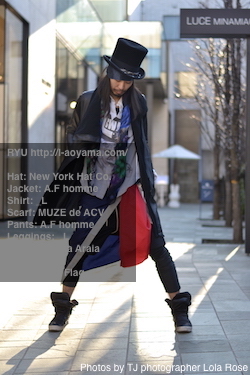Establishing Relationships
A 30-year veteran Marriage Family and Child therapist, mother of five, and grandmother of 10, Lorraine Al-Jamie helps parents to acquire skills that enhance their ability to raise high-functioning and happy children.
Establishing Relationships
THE building of relationships depends on building common interests. This process begins at birth, and you can observe it when mothers and fathers hold their newborns and echo the sounds that their newborns make. For their parents, everything young babies do is fascinating and this makes the task easier. Whether it is just seeing them yawn for the first time, or their first sneeze, each new thing provides a new shared experience. However, as they get older they sometimes become interested in things that are meaningless to us: for instance, mom will have little interest in the toy truck her little boy is pushing around. However, at that age the mother is still captivated by the child’s enjoyment and, therefore, remains present and sometimes involved. But I think we have all experienced a situation in which we, lost in our own thoughts, have struggled to pay attention to our child while he tugs our clothes saying, “Mommy” or “Daddy.” However, if we do make the effort to engage with our children, there is much satisfaction to be had in the interaction.
How I Speak is Who I Am
How I Speak is Who I Am
EVERY now and then, I have a conversation that goes something like this:
New Acquaintance: So, where are you from?
Me: Australia.
New Acquaintance: And How long have you lived in Hong Kong?
Me: Around 20 years.
New Acquaintance: Wow! And you haven't lost your Australian accent.
I'm never quite sure how to respond.
Linking Growth to HR Strategy
Former Accenture Chairman Masakatsu Mori shares his 30 years of experience in advising many of Japan’s leading corporations as well as foreign corporations doing business in Japan and beyond.
Linking Growth Strategy to HR Strategy
JAPANESE corporations have accumulated huge capital and technology over the past 50 years. There are over $2.7 trillion in cash and equivalent assets in the corporate sector. Among the top ten companies which own the highest patent values worldwide, five are Japanese. However, the number of global business leaders developing and running global businesses has been increasing much more slowly compared to other countries around the world.
Dennis Awori: Toyota in Africa
Formerly Kenya’s ambassador to Korea and Japan (2004-2009) and now representing Toyota Tsusho Corporation as chairman in 13 African states, Dennis Awori knows a thing or two about Japan and its commercial links to the world. Tokyo Journal met up with Awori to find out more.
A Debate with Large Consequences
Through the Eyes of Yankelovich
A Debate with Large Consequences
In industrialized nations we are in the early stages of one of the most important debates in our lifetime:
• Is growing income inequality inevitable or susceptible to change?
• If it is inevitable, what should we do to reduce its harmful effects?
• If it is susceptible to change, what actions should we take to restore greater fairness to our economies? Starting in the 1970s, and accelerating after the Great Recession of 2007-8, income of those at the top of the scale grew enormously, while wages for the middle and bottom parts of the scale stagnated.
It wasn’t until the gifted French economist Thomas Piketty published his masterful book, “Capital in the Twenty-First Century” that a serious and thoughtful debate about inequality trends began in earnest. The book has caught the attention of the industrialized nations for several reasons.
The Legacy of Donald Richie
The Legacy of Donald Richie
The following is part of Tokyo Journal’s Living Tribute to Donald Richie who passed away on February 19, 2013. Donald Richie’s contribution was originally printed in the January 1995 edition of the Tokyo Journal. It was excerpted from “Japan Journals 1947-2004” by Donald Richie (Stone Bridge Press. 2004). Donald Richie’s first visit to Japan took place in 1947. Since that time he became a celebrated film critic, author and composer, not to mention a journalist of many talents recording the changes of over half a century of life in Tokyo. Donald Richie contributed to the Tokyo Journal over the years and when asked about times in the nineties, Donald replied, “Frightening but exhilarating. I think everybody with a pencil should be out there taking notes.”
THE LAST SAMURAI
This fourth installment from his Japan Journals features Donald Richie’s elegy for Yukio Mishima,written shortly after the novelist’s suicide.
15 November 1970. It has been some days now since Mishima killed himself, yet the sense of loss continues. It is not that he did it. I guess we all expected that. It was the way in which he did it. It was like a rape. (So all of us victims are trying to account for it. I will write an essay and give it to the paper.)
The shock that so many felt at the manner of Yukio Mishima’s death was deepened by an equally strong sense of loss. No contemporary writer had more completely disclosed himself; none had more honestly shared his most deeply personal emotions. From Confessions of a Mask onwards, Mishima was himself his own subject and his varied works are all, to an extent, autobiographical.
Pocky's Sweet Success
The Elegant Social Snack
Pocky has been a household name and a favorite chocolate confectionary for years in Asia, but how is it faring across the Pacific? Tokyo Journal's editorial team visited with President Shunsuke Nakai at Ezaki Glico USA headquarters to find out.
Mari’s Homemade Cooking Recipes
How to Gyoza (Japanese pan-fried dumplings)
餃子
Ingredients:
• 200g of ground meat
• 2 bundles of Chinese chives
• 6-10 leaves of cabbage
• 2 pieces (about 30g) of grated ginger
• 2 cloves of grated garlic
• 1 tablespoon of oyster sauce
• 2 tablespoons of sake
• 2 tablespoons of soy sauce
• 2 tablespoons of sesame oil
• 2 packs of dumpling skin
The Man Who Brought Sushi to America, Part V
The Man Who Brought Sushi to America, Part IV
Introducing Sake to America
This is the fifth in a series of interviews with Noritoshi Kanai, chairman of Mutual Trading Co., Inc. and the man who coined the phrase “sushi bar.”
Streetstyle Glamour
Tokyo Journal photographer Lola Rose captures the latest in street fashion in her photo column "Streetstyle Glamour."
The complete article can be found in Issue #275 of the Tokyo Journal. Click here to order from Amazon.






















